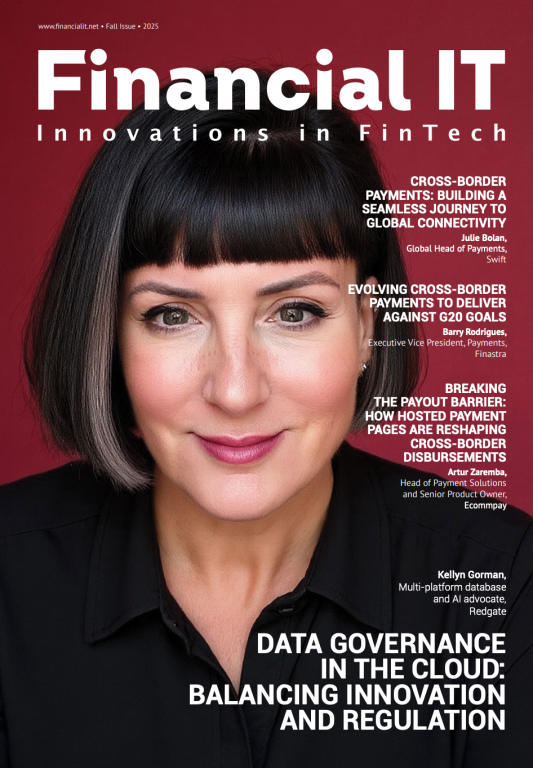Winning the Evidence Game: How High-Fidelity Data Drives Faster Dispute Resolution

- Nick Imperillo, Senior Manager of Risk Services at GeoComply
- 29.08.2025 11:30 am #Data #Payments
For many online merchants, chargeback fraud is a relentless game of whack-a-mole, costing them, on average, a 206% increase in losses per dollar relative to other types of fraud. To make matters worse for them, while banks are responsible for processing claims, it’s ultimately merchants who bear the financial and operational brunt of this highly reactive process. With Mastercard's 2025 State of Chargebacks Report predicting a 24% growth in global chargeback volume by 2028, merchants face an escalating challenge that will cost the entire industry $132 billion-a-year.
Combatting chargeback fraud is an uphill battle from the offset. Not only are merchants immediately on the hook for any financial losses related to chargebacks – they are also responsible for collecting evidence to fight each claim. The chargeback process is a grueling, time-consuming process, often highly manual and taking up to 120 days to resolve. The merchant is almost always, by default, “guilty until proven innocent,” and required to refund chargebacks unless they can prove otherwise.
Without a robust strategy to precisely distinguish fraudulent claims from legitimate claims and provide near-instant compelling evidence reports, these disputes can quickly overwhelm risk teams and erode merchants’ profits.
Why Traditional Fraud Detection Falls Short
Many merchants are still using outdated fraud detection methods that rely on basic transaction-level data, such as purchase amounts, merchant category codes and historical dispute patterns. These methods are useful for identifying obvious fraudulent transactions but fail to address the nuanced nature of chargeback fraud, such as the subtleties between first-party fraud and third-party fraud. Other frequently-used risk signals in the industry, like IP-based geolocation, are easy to spoof and can be inaccurate by over 50 miles.
This can lead to a higher proportion of false positives, increasing operational costs and burdening risk teams with handling unnecessary disputes. As chargeback volumes continue to rise, manual investigations become unmanageable, leading to delayed decisions, accumulated fraud losses and less resource allocation to more urgent problems.
Advanced Strategies to Mitigate Chargeback Fraud
To effectively fight back against chargeback fraud, both speed and accuracy are of essence. Merchants need to prioritize tools that not only identify the exact intent or context of a dispute, but also generate immediate actionable insights. The best tools will leverage high-quality data sources, not only cutting false positives but also providing compelling evidence in seconds, so that risk teams can resolve disputes quickly and focus on what matters.
Some examples of battle-tested, high-fidelity data sources include robust geolocation signals, device information and customer behavior insights that pinpoint both a user’s true location and intent. For example, multi-layered geolocation signals offer far more granular insights, combining robust location sources, like Wi-Fi, GPS and GSM, to provide a level of precision down to a few meters. When you combine this with device and behavioral data, you get a powerful and accurate user intent signal.
I have seen firsthand how incorporating these datapoints into evidence reports have cut the time spent on chargeback disputes by up to 90%, and increased win rates by 70 - 90%. Integrating precise location and device signals with behavioral intelligence provides subtle indicators of fraud that a lot of technologies would miss. By analyzing these metrics in real-time, fraud and risk teams can proactively identify fraudulent activity and take action before it’s too late.
The Hidden Costs of Ignoring Chargeback Fraud
Every $1 lost to fraud costs merchants $3.35, costing businesses over $25 billion annually. However, failing to invest in robust chargeback fraud prevention doesn’t just result in direct financial losses. It can also have long-term operational consequences. Excessive chargebacks can trigger PSP remediation programs, where merchants are put under pressure to fix fraud issues. If unresolved, this can lead to a complete loss of payment processing capabilities, leaving businesses unable to accept funds and severely damaging their reputation. Additionally, merchants who don’t demonstrate adequate fraud prevention measures may face heightened compliance risks, audits, and potential fines.
The Way Forward
The ultimate goal is not just reducing final losses - it’s achieving operational excellence by having a proactive approach to risk management. By moving beyond legacy systems and outdated technologies like IP-based geolocation, businesses can begin to leverage high-fidelity signals that provide a more complete and accurate picture. This shift provides the additional context needed to respond to chargebacks quickly and more efficiently before they impact the bottom line.
Not to mention, investing in modern technologies relieves the heavy operational burden on risk teams. By collecting robust signals and automating the creation of compelling evidence reports in seconds, risk teams are freed from the time-consuming, manual work of investigating chargeback disputes. This allows them to shift their focus from reactive firefighting to strategic fraud prevention and to apply their expertise to the most complex and high-value cases, ensuring resources are allocated where they can have the greatest impact.



















